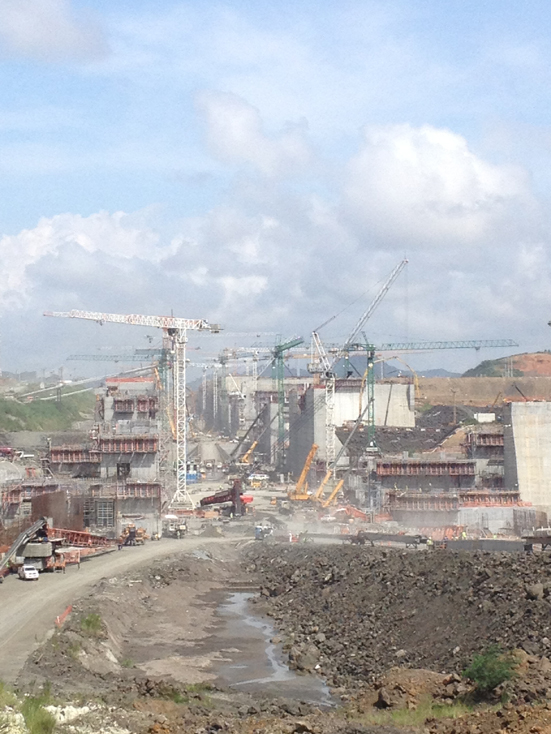It has been nearly 100 years since the Panama Canal was completed. Even nearly a century after it opened, the canal is still considered an engineering marvel. But the world of global shipping has changed, and in an era of massive cargo ships, the old canal is too small.
That’s why the nation of Panama is spending $6 billion to vastly expand the canal. The new Miraflores Locks near Panama City will be the canal’s gateway to the Pacific Ocean. They will be able to accommodate ships as long as four footballs fields carrying nearly 13,000 containers.
“The purpose of expanding the Panama Canal is to enable bigger ships to transit the Panama Canal,” said Julio Quijano, a lawyer and maritime legal specialist based in Panama City. “Panama is basically expanding the Panama Canal because it’s Panama’s way of remaining competitive.”
With the new canal scheduled to be in operation by April 2015, ports in the Northwest are under threat from competition that could take away millions of dollars in shipping and thousands of jobs. And the ports of Tacoma and Seattle are bracing for what the new canal will mean to business.
Ships that now come to Washington might just bypass the entire West Coast to go to the East Coast or to Texas.
“It’s definitely a game changer for the industry,” said Tay Yoshintani, Chief Operating Officer of the Port of Seattle.
“It’s a significant threat,” agreed John Wolfe, the Port of Tacoma’s CEO.
See photos of the Panama Canal and expansion project here.
Wolfe said the canal could mean job losses at both ports and the businesses that serve them when the canal opens and bigger ships can bypass Northwest ports.
“It’s likely in the thousands because between the two ports we create, directly and indirectly, hundreds of thousands of jobs here in the state,” said Wolfe.
The threat comes from the new canal’s greater length and width. Currently, the old canal can accommodate ships carrying around 4,400 containers, referred to in shipping as 20 foot equivalent units or TEUs. The ships are referred to as Panamax.
The new expanded canal will be large enough for ships carrying 13,000 TEUs or more, three times the capacity of a Panamax.
“That’s significant,” said Wolfe. “Those are the same ships that would be calling here in Puget Sound.”
But there is a new generation of even larger container ships that won’t fit into the new Panama Canal. One, the Marco Polo owned and operated by CMA-CGM shipping, carries 16,000 TEUs and is too large to fit into the new canal.
The Marco Polo is one of a number of ultra-large container ships that could rely on West Coast ports, including Tacoma and Seattle to offload cargo onto trucks and trains, bypassing the canal and a lengthy and expensive voyage around South America.
“So, we do have a significant competitive advantage,” said Yoshitanhi. “I say bring on the big ships for us. We’d love to see them here.”
Both Seattle and Tacoma need significant infrastructure upgrades to compete for the business of ultra-large ships. In Tacoma, port officials said completing State Route 167 and linking it with Interstate 5 is a must to provide a seamless transition from ship to highway for containers headed east.
The rail system linking the port to railroads also needs improvements to speed up the offloading process.
“If we’re not investing in the future, then we’re falling behind,” said Wolfe.
